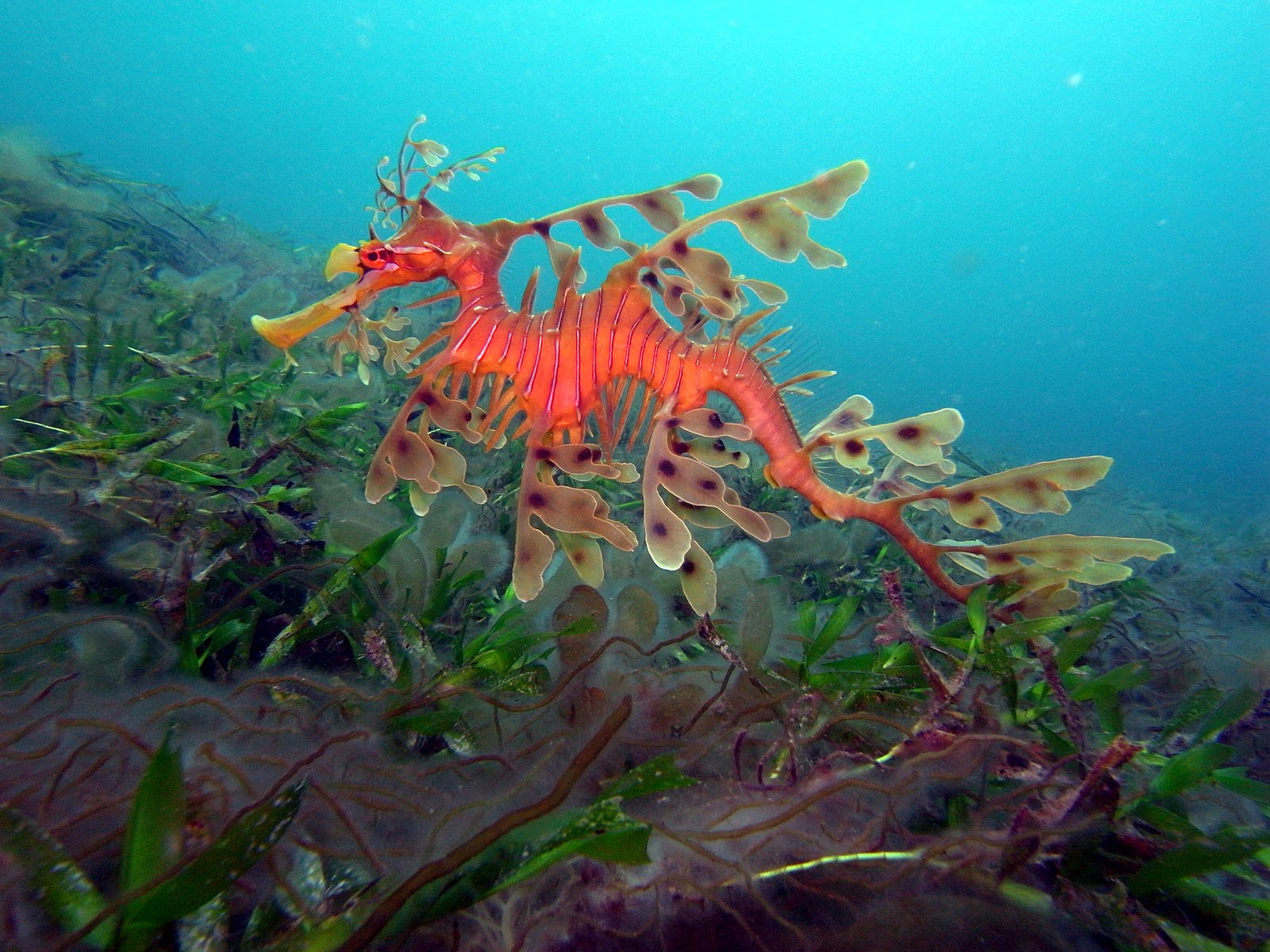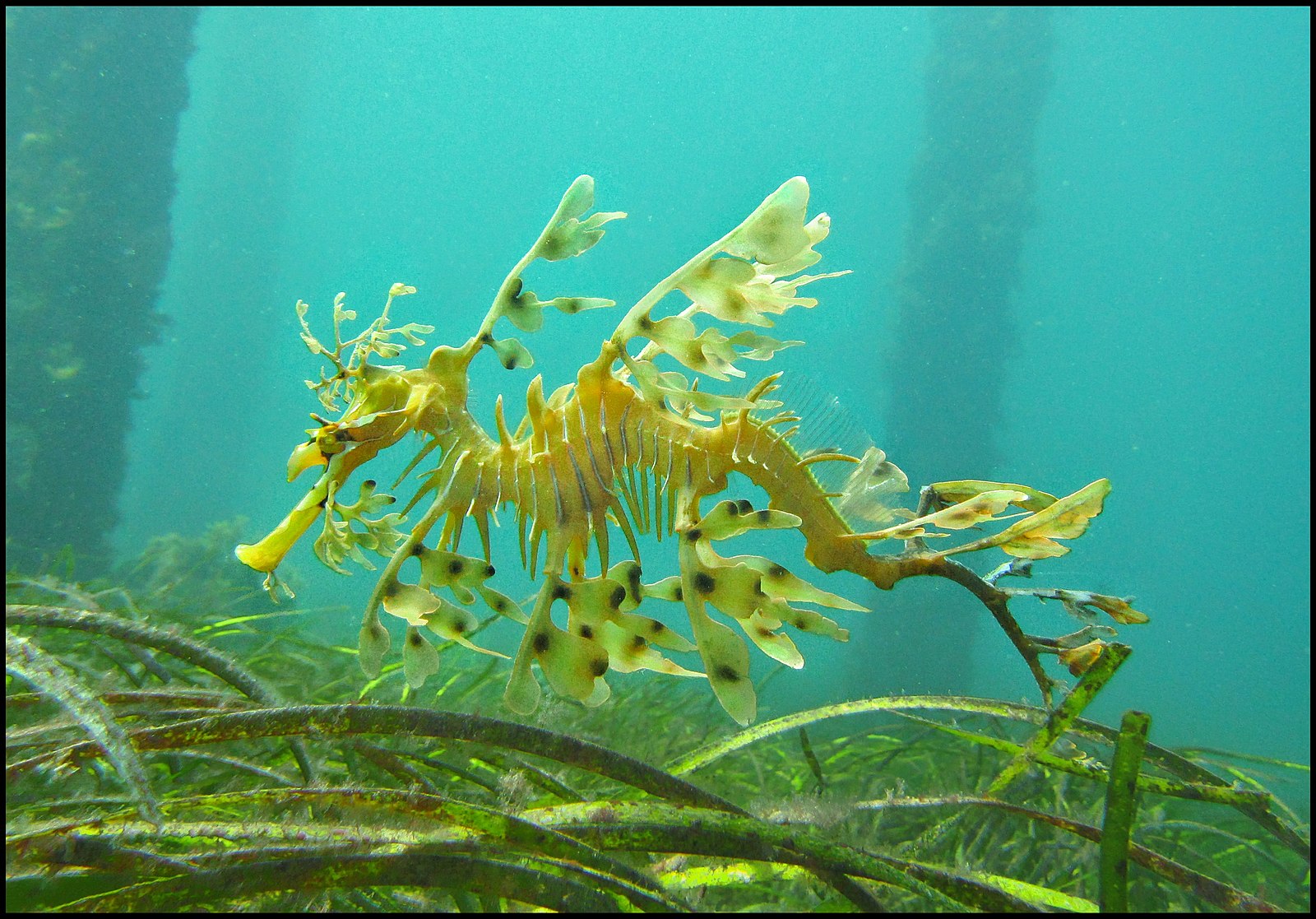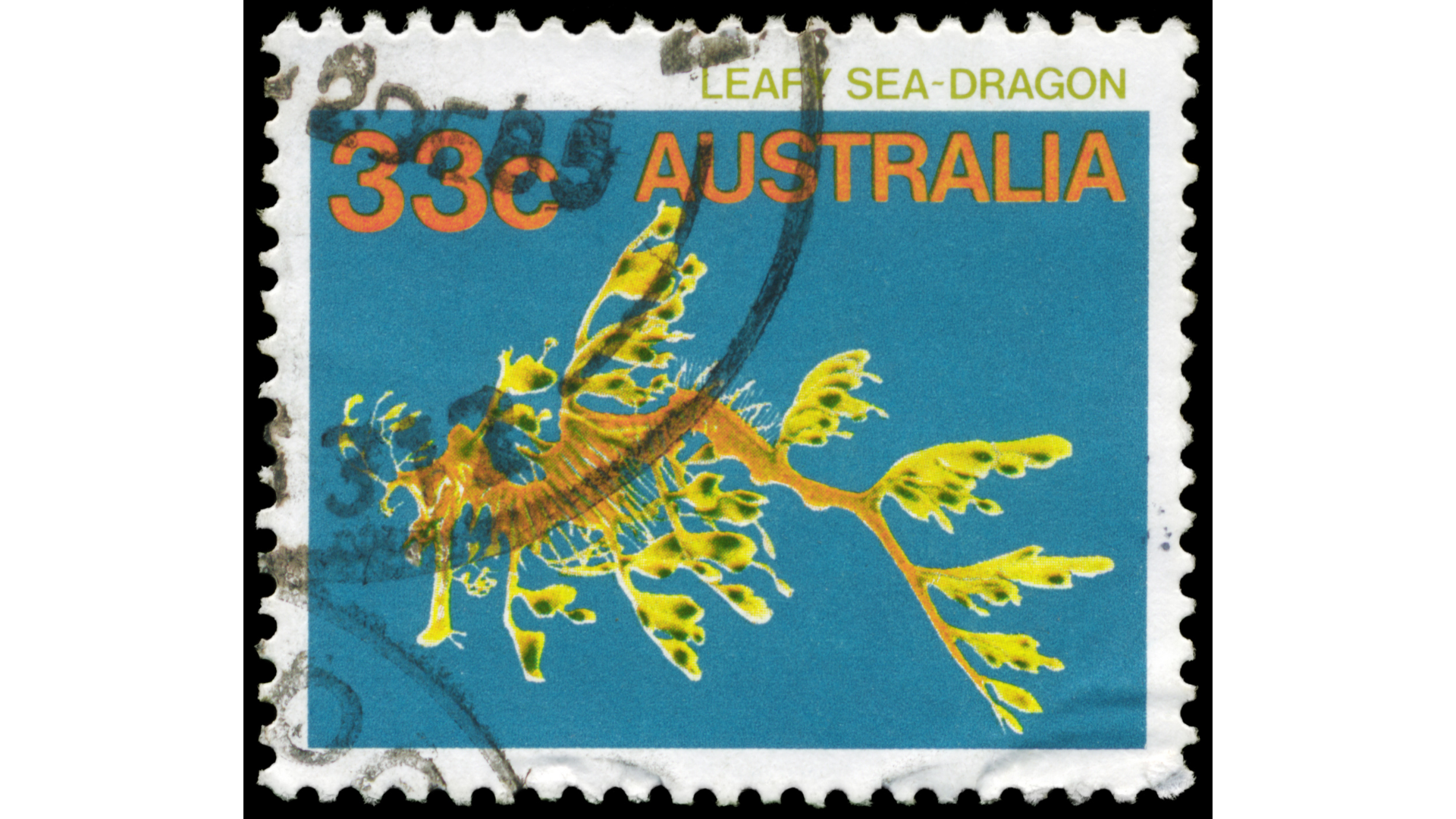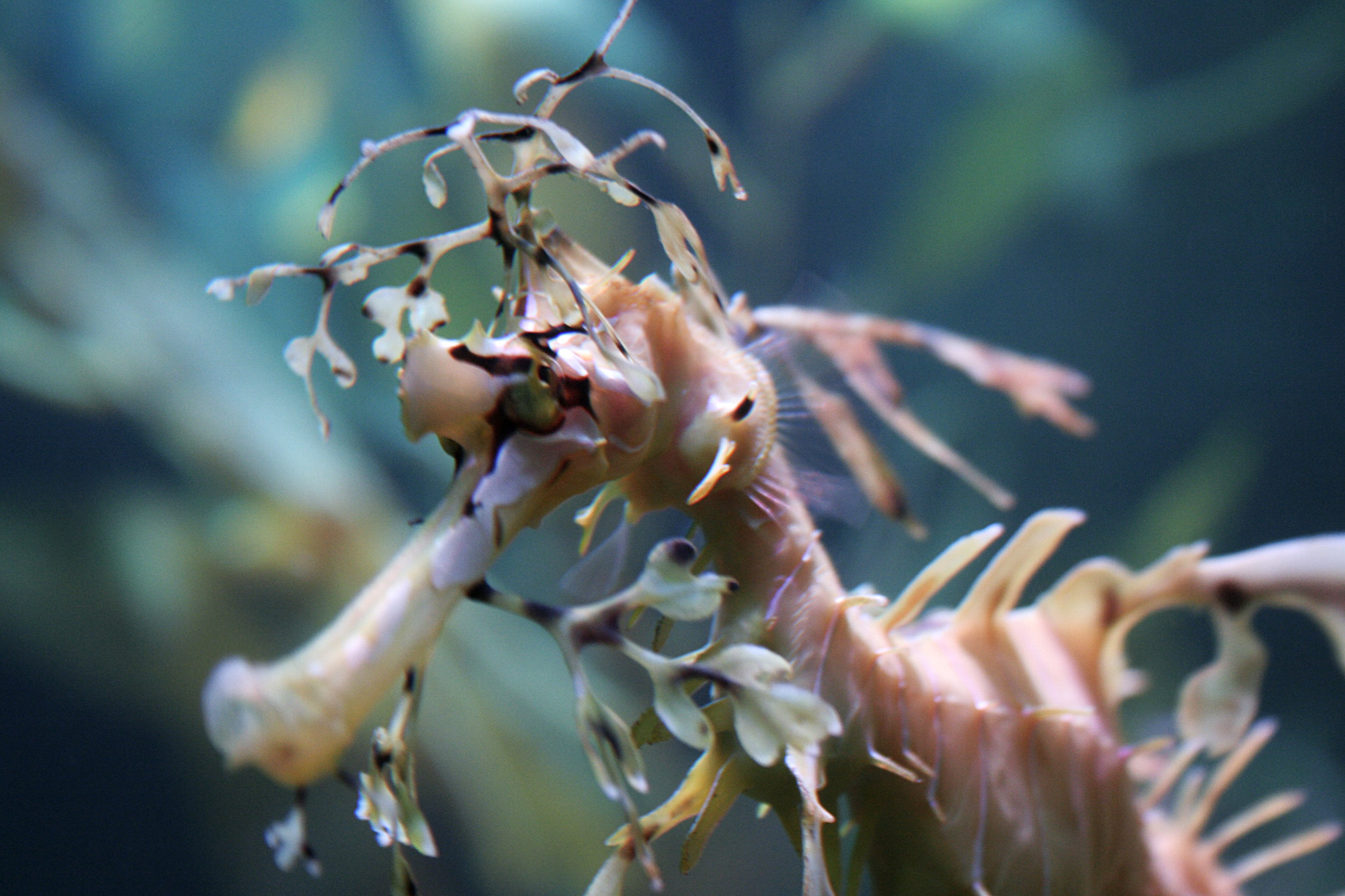7 Spectacular Facts About Seadragons
Yes, dragons of the sea are real ... and they're masters of disguise

You read the title. Your eyes got bigger. Could seadragons really exist?

Well, folks, the answer may shock you: yes. It’s time for you to meet the leafy seadragon (Phycodurus eques)! Although they may not be quite as reminiscent of the slithery mythological sea beasts you envisioned, I can assure you that they are in fact real. Their mesmerizing appearance isn’t all that makes these creatures magical.
Dive in and learn seven facts that make these majestic fish truly spectacular.
Those “leaves” weren’t made for swimmin’… and that’s not what they’ll do
At first glance, the delicate appendages that earn leafy seadragons their claim to fame may give you the impression that they’re used to swim through the water. It may be surprising, but none of these gauzy attachments are actually used for movement; rather, their sole purpose is to serve as camouflage, blending them into the lush kelp forests and seaweed surrounding them and rendering them nearly invisible.
Oh, and when it comes to swimming … that’s sea-riously not their forte.
Okay, so now we know that the leafy seadragon doesn’t use its leafy body parts to swim. You may be wondering, then, what exactly they use to move around the ocean. The answer is simple, though not very impressive. They have two incredibly thin fins that they use to steer as they drift through the water, with swim bladders that help them maintain buoyancy. Those fins are so thin, in fact, that they’re borderline transparent, so you’d need to look extremely closely in order to see them.
They’ve got a suit of armor under all that greenery.
We get it, they may look delicate. But don’t come at them. They have a solid coat of armor under all that greenery! Unlike other fish, these animals don’t have scales. Instead, their bodies are covered with bony plates of armor-like protection.
Their names are quite fitting when it comes to their habitat, mate.
Leafy seadragons thrive exclusively among the rocky reefs that border the southern coast of Australia, where they rely on their favorite seagrass beds to help them activate their one-of-a-kind, leafy disguise. Think it’s interesting that they’re only found in and around Australia? The country happens to think so, too; this feathery sea creature is the official marine emblem of southern Australia!
They’re cousins to another trumpet-nosed fish.
That’s right, you guessed it … the seahorse! Seadragons are very closely related to other long-snouted swimmers, including seahorses and pipefish, all claiming the family of Syngnathidae.
Seadragon dads are powerhouse dads.
Leafy seadragon daddios proudly take on the physical burden of bringing baby seadragons into the world, much like you may have heard about seahorses papas. However, unlike seahorses, male seadragons don’t have a pouch near their bellies; instead, they have a flap-like area under their tails where they house growing fertilized eggs that they receive from female seadragons. When it’s time for the teeny tiny dragon kids to greet the world, daddy dragon will bring them into the world over the course of up to two days.
They love themselves some shrimp toast crunch.
Okay, not exactly. But they do love crunchin’ on itsy bitsy crustaceans! Actually, if we’re being super technical, that’s not quite correct either. They don’t really munch, because seadragons don’t have teeth; instead, they suck up tiny critters like plankton and mysid shrimp, slurping them through their elongated snouts and consuming them whole with impeccable ease.
And there you have it: proof that seadragons really do exist … although they may be smaller, more delicate and much daintier than you ever expected. What fascinating species do you want to learn about next? Be sure to send us a message on Instagram and let us know!




